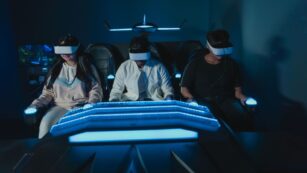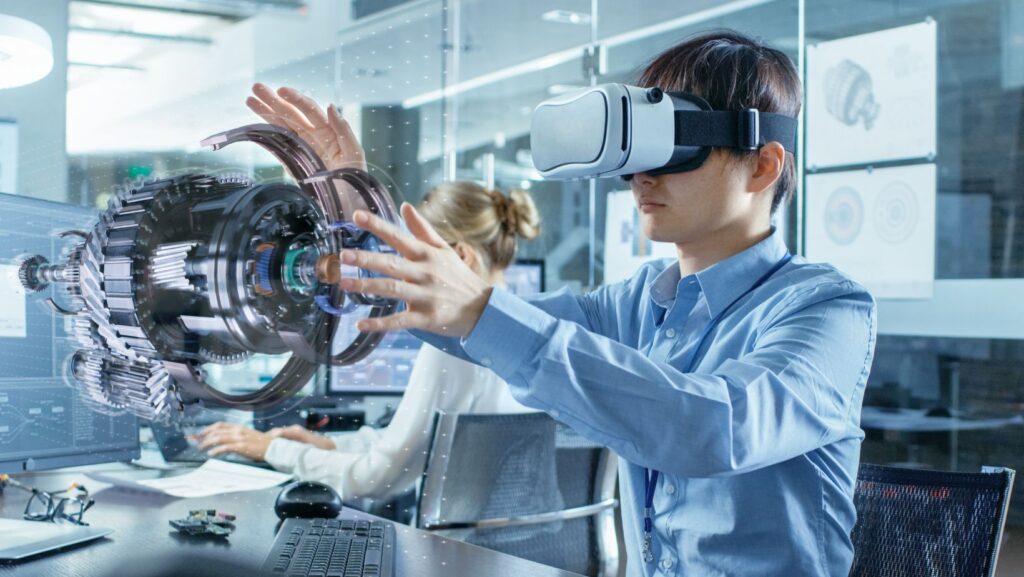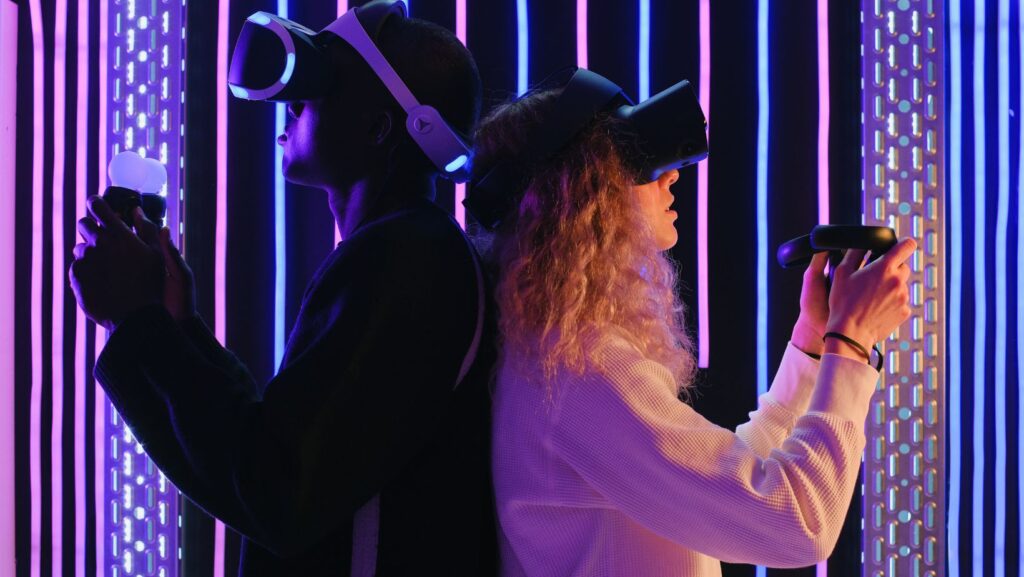In the digital age, the concept of a virtual battlespace has revolutionized military training and strategy. This immersive environment simulates real-world combat scenarios, allowing armed forces to hone their skills without the risks associated with live training exercises. As technology advances, these virtual landscapes become increasingly realistic, providing soldiers with vital experience in a controlled, cost-effective manner.
Virtual Battlespace
Virtual battlespace technology embeds military personnel in synthetic environments that mirror real-world combat scenarios. This technology leverages advanced tools like VR, AI, and cloud computing to enhance strategic skills and decision-making capabilities.
Key Components and Features
 Virtual battlespaces consist of several integrated components and features that collectively enhance the realism and utility of military simulations.
Virtual battlespaces consist of several integrated components and features that collectively enhance the realism and utility of military simulations.
-
Realistic Scenery and Terrain Mapping: Accurate representations of geographical features are essential for authentic simulations. Virtual battlespace systems use data from satellite imaging and geographic information systems (GIS) to replicate real-world locations down to minute details.
-
Dynamic Weather Systems: Weather can significantly impact military operations, and virtual battlespaces simulate various weather conditions to test troop readiness under different scenarios. From rain and fog to snow and extreme heat, these systems allow forces to plan and adapt to environmental challenges.
-
AI-Controlled Adversaries: For heightened realism, AI-powered opponents operate within the simulated environment. These adversaries are programmed with advanced tactical behaviors that mimic human decision-making, providing a challenging and unpredictable element to training exercises.
-
Networked Multiplayer Capability: Training exercises often involve multiple participants. Virtual battlespace systems support large-scale, networked interactions where units from different locations can collaborate or compete in the same scenario, fostering teamwork and strategic planning.
-
After-Action Analysis Tools: Learning from past actions is crucial for improvement. Virtual battlespaces are equipped with after-action analysis systems that record every decision and movement. This allows trainees and instructors to analyze performances and discuss necessary adjustments for future engagements.
These components ensure that virtual battlespaces serve as effective tools for military training, delivering experiences as close as possible to real-life conditions while offering the safety and repeatability of a controlled environment.
Applications of Virtual Battlespace
Military Training and Simulations
 Virtual battlespace technologies are crucial in military contexts, where they simulate combat scenarios with high precision. Trainees experience immersive environments that replicate actual landscapes and battle conditions, enabling them to hone their tactical skills safely. Key features include the use of virtual reality to create 360-degree environments, the incorporation of AI to generate responsive enemy tactics, and cloud computing to facilitate wide-scale training exercises. These simulations support a range of training objectives, from basic combat techniques to complex joint operation strategies, ensuring troops gain comprehensive battlefield experience before real-life deployment.
Virtual battlespace technologies are crucial in military contexts, where they simulate combat scenarios with high precision. Trainees experience immersive environments that replicate actual landscapes and battle conditions, enabling them to hone their tactical skills safely. Key features include the use of virtual reality to create 360-degree environments, the incorporation of AI to generate responsive enemy tactics, and cloud computing to facilitate wide-scale training exercises. These simulations support a range of training objectives, from basic combat techniques to complex joint operation strategies, ensuring troops gain comprehensive battlefield experience before real-life deployment.
Civilian and Educational Uses
Beyond the military, virtual battlespace applications serve significant purposes in civilian and educational settings. Universities and technical schools, for example, integrate these technologies to teach subjects like geography, history, and crisis management. Interactive simulations help students understand historical battles, geographical terrains, and disaster response strategies more effectively by placing them in simulations that demand real-time problem-solving.
Technological Foundations of Virtual Battlespaces
Real-Time Computing and Graphics
 Real-time computing ensures that virtual battlespace simulations operate without delays, reflecting changes instantly as they occur in the environment. This feature is crucial for maintaining the realism and responsiveness of the simulation, allowing military personnel to experience realistic combat scenarios. Graphics, on the other hand, contribute significantly to the immersion. They render detailed environments, from accurate terrain replications to dynamic lighting and shadow effects. High-resolution graphics help simulate complex visuals such as explosions, smoke, and weather conditions, which are vital for creating a believable and engaging environment.
Real-time computing ensures that virtual battlespace simulations operate without delays, reflecting changes instantly as they occur in the environment. This feature is crucial for maintaining the realism and responsiveness of the simulation, allowing military personnel to experience realistic combat scenarios. Graphics, on the other hand, contribute significantly to the immersion. They render detailed environments, from accurate terrain replications to dynamic lighting and shadow effects. High-resolution graphics help simulate complex visuals such as explosions, smoke, and weather conditions, which are vital for creating a believable and engaging environment.
AI and Machine Learning Contributions
AI and machine learning dramatically enhance the functionality and adaptability of virtual battlespaces. These technologies develop smart, responsive enemy combatants and non-player characters (NPCs) that adapt tactics based on the player’s actions. AI algorithms also manage large-scale simulation elements like crowd behaviors and traffic systems in urban warfare scenarios. Machine learning contributes by analyzing data from training sessions to improve simulation algorithms continually, ensuring scenarios become progressively challenging and instructive.



